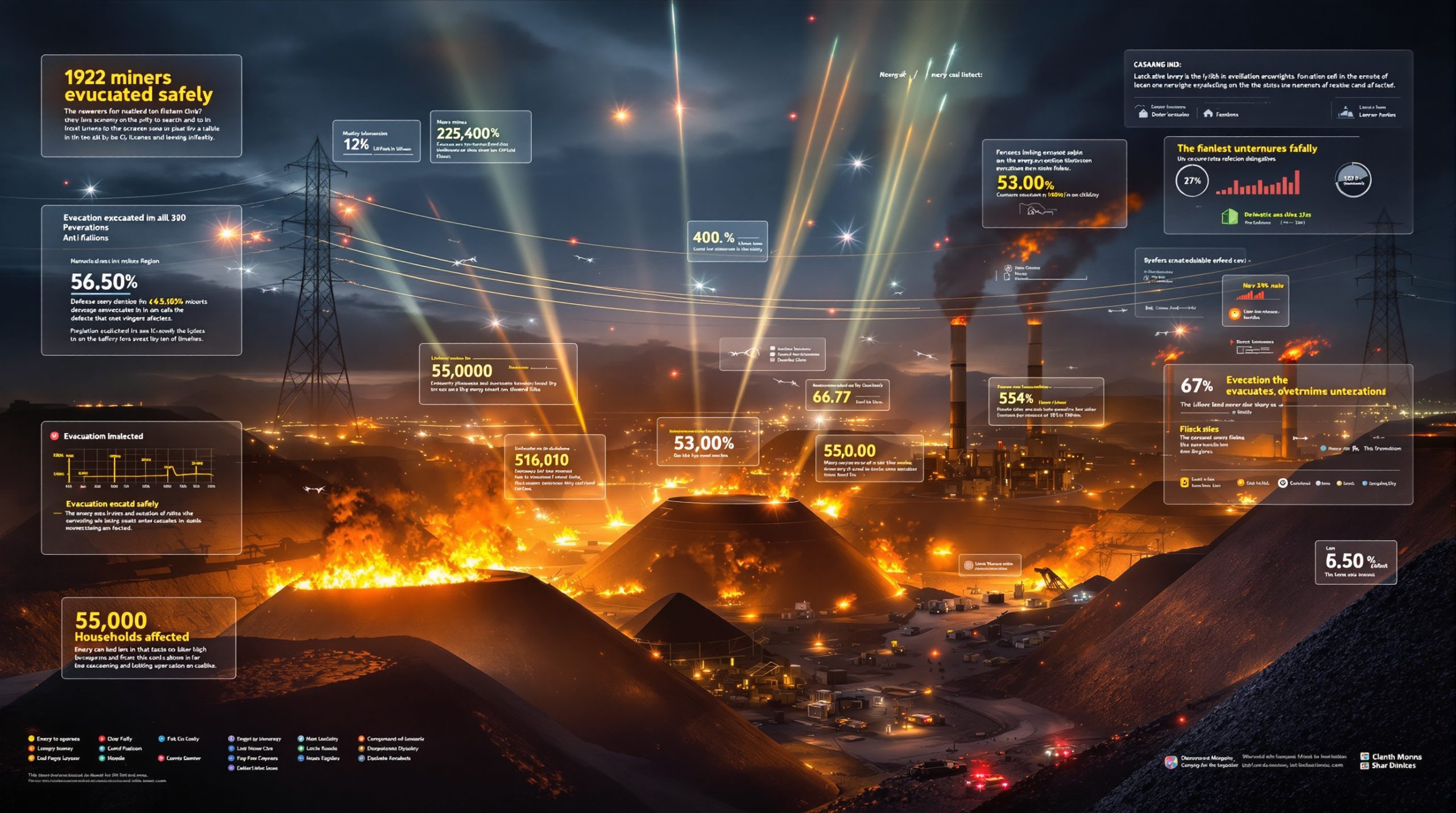What Makes Australia-US Critical Minerals Cooperation Different from Previous Summits?
The evolving landscape of global supply chain vulnerabilities has transformed routine diplomatic exchanges into urgent strategic negotiations. The Albanese Trump meeting timing critical minerals discussions represent a pivotal moment in resource diplomacy. Unlike conventional alliance meetings that typically focus on broad defense themes, contemporary discussions center on immediate economic dependencies exposed by recent geopolitical tensions.
Furthermore, these high-level negotiations are part of broader mining industry trends that emphasise strategic partnerships over traditional commercial relationships.
Strategic Timing Amid Export Control Pressures
Recent months have witnessed unprecedented disruptions in critical materials markets. China's implementation of export controls on gallium and germanium in December 2023 marked a significant escalation, given that China controls approximately 60% of global gallium production and 80% of germanium production, according to the U.S. Geological Survey's Mineral Commodity Summaries 2023.
These materials are essential for semiconductors and defense applications. Additional restrictions on graphite products, announced in October 2023, further demonstrated how quickly strategic materials can become diplomatic leverage. This timing transforms what might previously have been ceremonial meetings into high-stakes negotiations with immediate implications for Western supply chains.
Beyond Symbolic Agreements to Actionable Partnerships
Historical Australia-US resource cooperation has often concluded with memorandums of understanding lacking substantial financial commitments. The December 2019 Memorandum of Understanding on Cooperation in the Critical Minerals Sector, while symbolically important, focused primarily on geological science cooperation.
However, current circumstances demand partnerships involving specific investment pledges, processing infrastructure development, and long-term supply agreements with measurable outcomes. In addition, recent developments in US executive order policies have accelerated the urgency for concrete strategic partnerships.
Which Critical Minerals Define Australia-US Strategic Cooperation?
Australia's geological advantages position the nation as a potential alternative to Chinese-dominated supply chains across multiple strategic materials, though significant processing gaps remain. Moreover, the Australia critical minerals reserve strategy provides a foundation for expanded international cooperation.
Rare Earth Elements and Processing Realities
| Mineral Category | Australia's Position | Current Processing | Strategic Application |
|---|---|---|---|
| Rare Earth Ores | 4.2M metric tons reserves (5.6% global) | 87-90% processed in China | Defense electronics, wind turbines |
| Lithium | World's largest producer (47% global output) | Limited domestic refining | Electric vehicle batteries |
| Graphite | Significant identified resources | Minimal processing capacity | Battery anodes, steel production |
The U.S. Geological Survey's 2024 data reveals Australia as the world's second-largest rare earth concentrate producer. Nevertheless, China's processing dominance remains virtually complete, creating strategic vulnerability where Western nations access Australian-mined materials but remain dependent on Chinese facilities for value-added processing.
The Critical Processing Infrastructure Gap
Australia's 6.2 million metric tons of lithium reserves represent 26% of global reserves, yet the nation produces minimal lithium chemicals compared to China's 60% global market share. Similarly, while Australia identifies substantial graphite resources, China processes over 65% of natural graphite and 98% of spherical graphite essential for battery manufacturing.
Lynas Rare Earths provides the most significant example of Australia's processing potential, operating the Mount Weld mine. Consequently, the Australian Government's A$120 million commitment in March 2022 for a Kalgoorlie processing facility demonstrates the scale of investment required for meaningful supply chain diversification.
How Could US Investment Transform Australia's Processing Capabilities?
American financial commitment could address fundamental bottlenecks preventing Australia from becoming a fully integrated critical minerals supplier. For instance, initiatives similar to the US Exim loan programmes demonstrate how strategic financing can accelerate resource development projects.
Midstream Processing Infrastructure Requirements
According to Australia's Critical Minerals Strategy 2023-2030, establishing comprehensive processing capabilities requires A$5-10 billion investment over the next decade. Individual rare earth processing facilities typically cost A$500 million to A$1.5 billion, with development timelines extending 5-8 years from planning to commercial operation.
The U.S. Export-Import Bank's announcement of up to $500 million in financing for Australian critical minerals projects in December 2022 represents a significant start. However, industry estimates suggest much larger commitments will be necessary for meaningful transformation.
Essential infrastructure components include:
- Cracking and leaching plants for converting concentrates to mixed rare earth oxides
- Solvent extraction facilities requiring 30-100 separation stages for individual elements
- Metal production capabilities for converting oxides to pure metals or specialized alloys
- Battery-grade refinement systems achieving 99.5%+ purity standards
Technology Transfer and Intellectual Property Challenges
Chinese companies currently hold significant intellectual property in critical separation techniques, creating additional barriers beyond capital investment. Alternative technologies under development at facilities like Oak Ridge National Laboratory offer potential pathways, though commercial viability remains unproven at scale.
The Center for Strategic and International Studies noted in their November 2023 report that establishing processing capabilities outside China requires sustained government support. Furthermore, this support must last through what industry experts call the valley of death period lasting 5-10 years before facilities achieve commercial viability.
What Are the Economic Implications for Both Nations?
The potential partnership extends beyond resource security to encompass broader economic transformation opportunities with measurable impacts.
Australia's Economic Diversification Potential
Current Australian Bureau of Statistics data shows 80-85% of critical mineral exports flowing to China, with total critical mineral exports valued at A$17.4 billion in 2022-23. Lithium exports alone contributed A$15.3 billion, primarily as unprocessed spodumene concentrate.
Research by the Cooperative Research Centre for Optimising Resource Extraction demonstrates typical value multiplication through processing:
- Raw ore: Baseline value
- Mineral concentrate: 10-20x raw ore value
- Separated oxides: 3-5x concentrate value
- Pure metals: 1.5-2x oxide value
- Manufactured products: 2-10x metal value
Additionally, the Australian Government estimates that processing creates 2.5-4 indirect jobs for each direct processing position, with particular benefits for regional mining communities in Western Australia, Queensland, and South Australia.
US Supply Chain Resilience Benefits
USGS data reveals concerning import dependencies across critical materials. The United States maintains 74% net import reliance for rare earths, 100% reliance for graphite, and increasing dependence on lithium imports despite domestic production capabilities.
American involvement in Australian processing development would create alternative supply routes for materials essential to defence contractors. For instance, Lockheed Martin's F-35 programme requires rare earth magnets, and Raytheon missile systems depend on multiple critical minerals.
How Does This Connect to Broader AUKUS Objectives?
Critical minerals discussions form an integral component of comprehensive security partnerships extending beyond traditional military cooperation frameworks.
Defence Industrial Base Integration Requirements
The AUKUS partnership, announced in September 2021, encompasses two primary pillars: nuclear-powered submarine acquisition and advanced capabilities cooperation. Australia's commitment to acquire 3-5 Virginia-class submarines beginning in the early 2030s, followed by 8 SSN-AUKUS submarines, represents a A$368 billion investment over 30 years.
Defence systems require specialised materials currently sourced through potentially vulnerable supply chains. Congressional Research Service analysis indicates that an F-35 fighter aircraft contains approximately 417 kg of rare earth materials, while Virginia-class submarines require several thousand kilograms of specialised materials for reactor components and electronic systems.
Technology Sharing Framework Development
AUKUS Pillar 2 cooperation areas include quantum technologies, hypersonics, electronic warfare, and undersea capabilities. Each requires ultra-high purity materials and specialised components, making the partnership's success partly dependent on securing trusted supply chains for these advanced materials.
The Submarine Rotational Force – West agreement to station up to 4 US Virginia-class submarines and 1 UK Astute-class submarine in Perth by 2027 creates immediate infrastructure requirements. Consequently, this development necessitates workforce development needs, with approximately 200 US naval personnel initially expanding over time.
What Challenges Could Complicate Implementation?
Despite mutual strategic benefits, several factors could limit partnership effectiveness and delay meaningful supply chain diversification.
Infrastructure Development Timelines
"Critical Timeline Consideration: Building processing facilities requires 5-8 years from planning to commercial operation, meaning immediate supply chain benefits remain limited regardless of agreement scope or financial commitments."
Recent Australian examples demonstrate these constraints. The Tianqi Lithium Kwinana refinery in Western Australia required five years from initial announcement in 2014 to operational status in 2019, despite substantial Chinese investment and established technology.
Environmental and Regulatory Complexities
Australian environmental approval processes and US export control regulations present significant implementation challenges. Rare earth processing involves complex chemical separation requiring careful environmental management. Furthermore, US export controls on certain technologies could slow knowledge transfer essential for competitive processing development.
The Australian Government's Critical Minerals Strategy acknowledges that regulatory streamlining across multiple agencies will be necessary to achieve development timelines competitive with international alternatives.
Chinese Economic Response Scenarios
China might respond to closer Australia-US resource cooperation through several mechanisms:
- Accelerated development of alternative suppliers in Africa and South America
- Increased investment in recycling technologies to reduce raw material dependence
- Potential trade restrictions on Australian mineral exports to Chinese markets
- Enhanced domestic processing capacity to maintain global market dominance
What Outcomes Would Demonstrate Successful Cooperation?
Meaningful progress requires specific, measurable commitments rather than general statements of strategic partnership.
Concrete Investment Benchmarks
Successful outcomes must include:
- Specific financial commitments with defined disbursement schedules
- Named corporate participants in processing joint ventures
- Facility construction timelines with milestone-based progress metrics
- Processing capacity targets measured in tonnes per year of finished products
The MP Materials model at Mountain Pass, California provides a relevant template. Their phased approach included completing rare earth concentrate production in 2020, oxide separation by 2022-2023, and planned metal/magnet manufacturing investment of $700 million for Phase 3 operations.
Regulatory Streamlining Agreements
Both nations could announce expedited approval processes for critical minerals projects, similar to the streamlined permitting arrangements used for major defence projects. This might include dedicated project officers, consolidated environmental reviews, and parallel rather than sequential approval processes.
How Might This Impact Global Critical Minerals Markets?
Successful Australia-US partnership could catalyse broader changes in global resource flows and competitive dynamics beyond the bilateral relationship.
Market Diversification Effects
Meaningful cooperation might encourage other allied nations to develop alternative supply relationships, potentially including Japan, South Korea, and European partners seeking supply chain resilience. Consequently, this could lead to more competitive pricing across critical materials markets as Chinese processing dominance faces genuine competition.
Historical precedent exists in Canada's development of potash and uranium processing capabilities, which created alternative supply sources and influenced global pricing structures over extended periods.
Investment Flow Redirection Potential
Private capital allocation might shift toward Australia-based processing projects if government backing provides sufficient risk mitigation. The Energy Fuels-Neo Performance Materials partnership for separated rare earth facilities in Utah, with estimated initial investment of $20-50 million, demonstrates how government support can catalyse private investment.
However, the Australian Strategic Policy Institute noted in their April 2021 analysis that Australia's opportunity lies not merely in mining expansion but in becoming a trusted processing partner requiring long-term investment horizons and sustained government support.
What Are the Long-term Strategic Implications?
The Albanese Trump meeting timing critical minerals outcomes could establish precedents influencing resource diplomacy patterns and alliance structures for decades.
Alliance Structure Evolution
Success might demonstrate how traditional military alliances can expand into economic security cooperation. This approach addresses 21st-century vulnerabilities through integrated approaches combining defence, technology, and resource security considerations.
This model could extend to partnerships with other allies facing similar supply chain vulnerabilities. Furthermore, it could potentially create a network of trusted suppliers and processors reducing collective dependence on single-source materials.
Economic Security Integration Framework
The White House's June 2021 report on supply chain resilience concluded that overreliance on any single nation for critical materials creates strategic vulnerabilities that cannot be measured purely in economic terms. Diversification carries costs but provides essential insurance against supply disruptions.
The partnership's development could establish frameworks for evaluating the strategic value of supply chain resilience investments. Additionally, this would balance economic efficiency against security considerations in critical materials procurement decisions.
In conclusion, the Albanese Trump meeting timing critical minerals discussions represent more than routine diplomatic engagement. They signal a fundamental shift toward resource security as a cornerstone of modern alliance structures. Moreover, success will be measured not through symbolic agreements but through concrete infrastructure development and sustained investment in processing capabilities.
The implications extend beyond bilateral relations to influence Australian resource exports patterns and global supply chain configurations. According to recent analysis, the potential for transformative partnership exists, though implementation challenges remain significant.
Further Context: This analysis reflects publicly available information regarding Australia-US strategic cooperation through April 2024. Readers seeking current developments should consult major international news outlets and official government sources for the most recent policy announcements and diplomatic outcomes.
Ready to Identify the Next Critical Minerals Discovery?
Discovery Alert instantly delivers notifications on significant ASX mineral discoveries using its proprietary Discovery IQ model, transforming complex geological announcements into actionable investment insights. With Australia's critical minerals sector attracting unprecedented global attention, discover how historic mineral discoveries have delivered substantial returns and begin your 30-day free trial today to position yourself ahead of the market.




